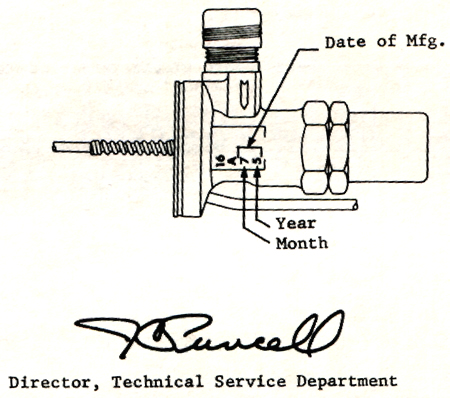
Subject: Air Conditioning Cooling Capacity Loss
Model and Year: 1965 Chevrolet
Source: Chevrolet Technical Service Bulletin
Bulletin No: TSB #1166 , DR #768
Section: XV
Date: October 6, 1965
TO: ALL CHEVROLET SERVICE PERSONNEL
1965 Chevrolets with air conditioning may experience loss in cooling capacity (outlet temperature higher than specifications) under high ambient temperature conditions when no refrigerant leakage or component damage is evident. This problem may be due to internal leakage at the seat contact area in the expansion valve and is most evident when high ambient temperatures result in compressor head pressures above 200 psi with corresponding higher leak rate in expansion valve. This condition may incorrectly indicate a low refrigerant charge at the sight glass. Use the procedure outlined on page 2 to determine if loss of cooling capacity is due to a defective expansion valve.
This possible deficiency was corrected, effective July, 1965. Expansion valve identification (No. 16A followed by the month and year) is stamped on the side of the valve as shown in the following illustration. When replacing the expansion valve (Part #5910525), be sure the identification stamp is 16A-"75" or later. Qualified parts may also be identified by an "X" preceeding the quantity and part number on the parts label, i.e., X1-5910525 (first design parts label reads 1-5910525).
PARTS DATA
Part No .: 5910525
Description : Thermostatic Expansion Valve

EXPANSION VALVE TEST PROCEDURE
Article ID: 1162
Created: February 6, 2015
Last Updated: February 8, 2015
Online URL: https://www.corvetteactioncenter.com/tech/knowledgebase/article/1965-corvette-service-bulletin-air-conditioning-cooling-capacity-loss-1162.html